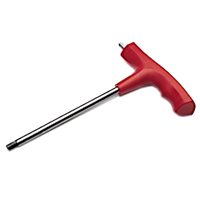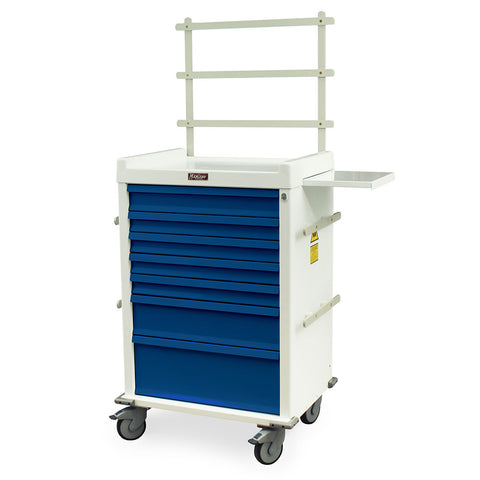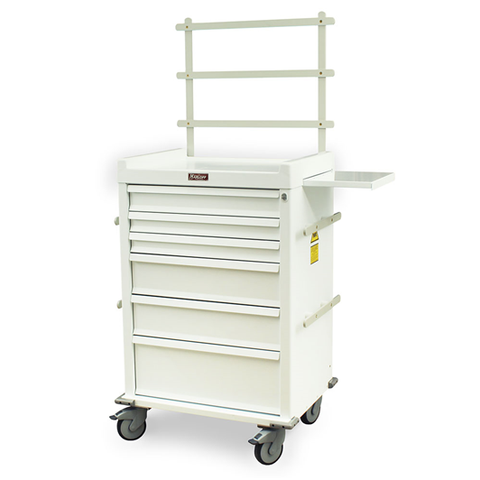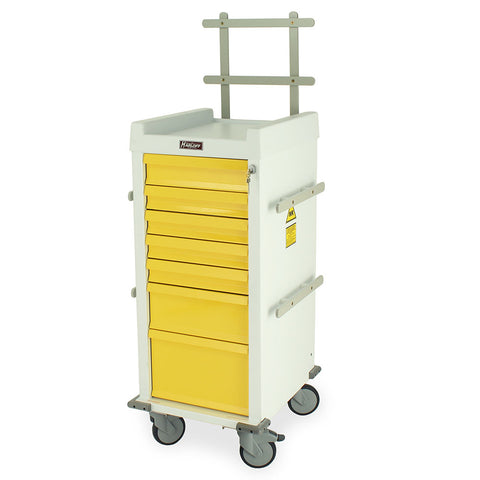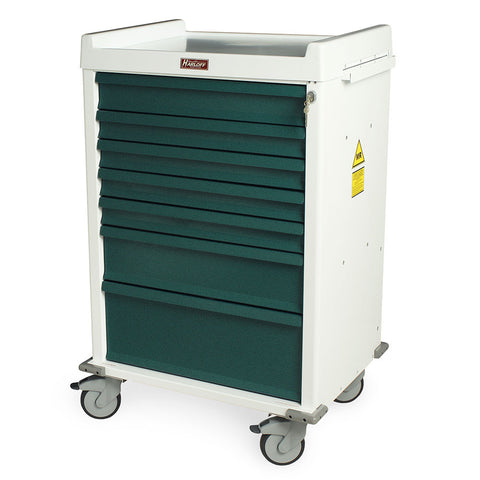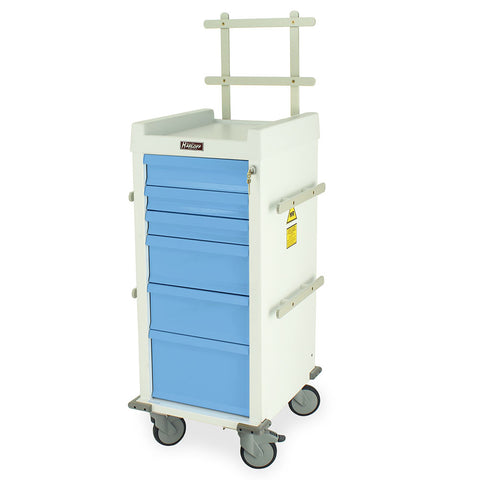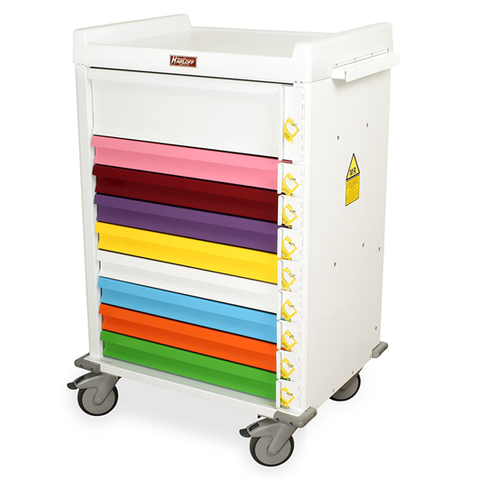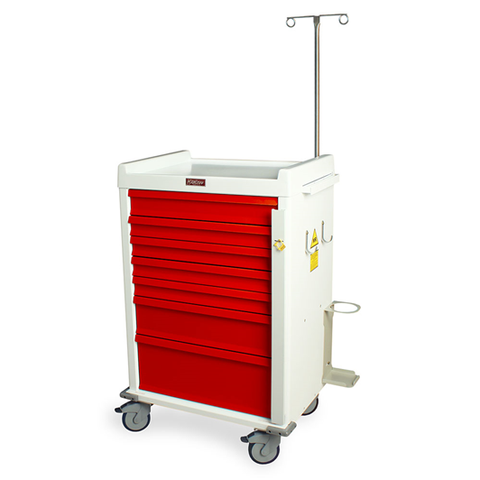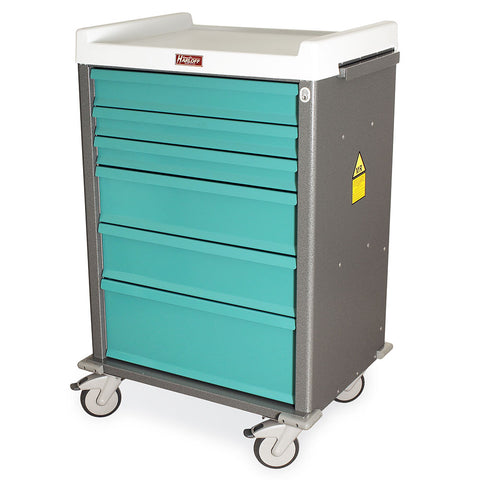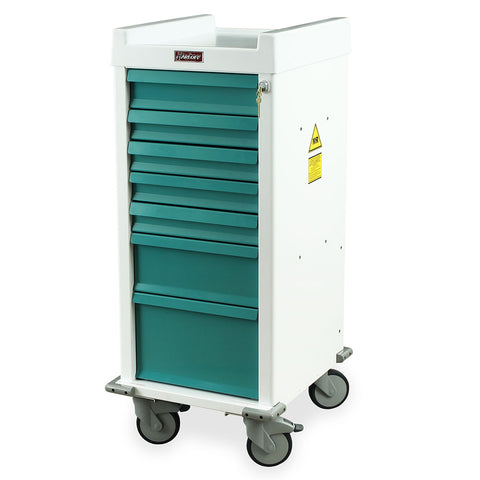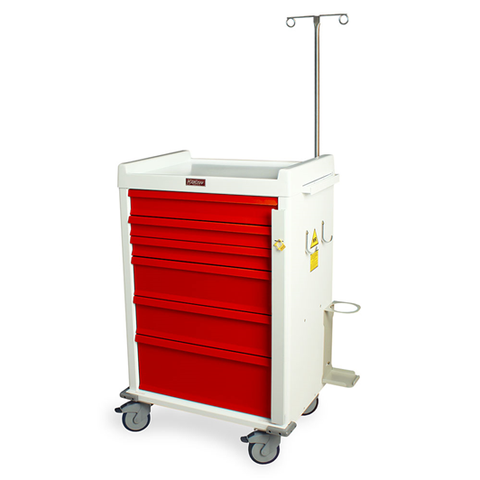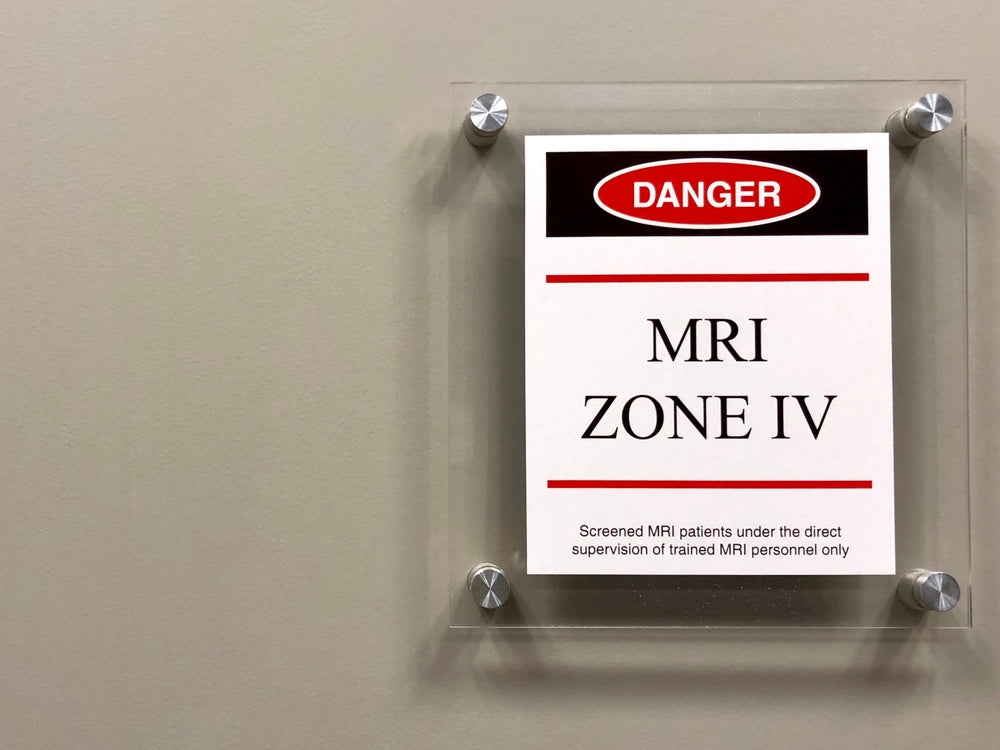
Introduction to MRI Zone IV
Understanding MRI Safety Zones (I-IV)
MRI facilities are divided into zones I through IV to protect patients and staff from strong magnetic fields. Zone IV is the MRI scanner room, where the strongest magnetic fields are present. Only equipment that has been tested and labeled as MR Safe or MR Conditional can enter this area. Using items that are not labeled or are ferromagnetic can create serious safety hazards.
Zone I is freely accessible to the public, Zone II is where patients are screened, Zone III is restricted to trained personnel with approved devices, and Zone IV is the scanner room. Understanding these zones is critical for maintaining safety, controlling workflow, and ensuring compliance with ASTM and FDA regulations.
Why Zone IV Requires Special Attention
The MRI scanner generates a powerful static magnetic field. Even small ferromagnetic objects can become projectiles if brought into Zone IV. MRI Zone IV requires special attention because of these risks, as well as the potential for equipment to interfere with imaging results. Staff must ensure that only approved MR Safe and MR Conditional devices are present in the room.
Risks of Using Ferromagnetic Equipment in Zone IV
Using non-MR Safe equipment in Zone IV can lead to serious injury or death, damage to the scanner, and distorted imaging. Common risks include projectile incidents, thermal injury, induced currents, and equipment malfunction. Hospitals and imaging centers must adhere strictly to MR Safe and MR Conditional labeling to protect both patients and staff.
MRI Zone IV Safety Requirements
MR Safe, MR Conditional, and MR Unsafe Labels
Products used in MRI Zone IV are classified as MR Safe, MR Conditional, or MR Unsafe. MR Safe items, such as the MR Safe IV Pole, pose no hazard in any MRI environment. MR Conditional devices, like the MRI-Conditional stretcher, have been tested and shown to be safe under specific conditions such as magnetic field strength, radio frequency exposure, and specific absorption rates. MR Unsafe items, including traditional metal hospital stretchers, must never enter Zone IV.
ASTM F2503 Standards and Compliance
ASTM F2503 defines the requirements for marking medical devices for safe use in MRI environments. Hospitals must ensure that all Zone IV equipment meets these standards, which include testing for magnetically induced displacement, torque, and radiofrequency heating. Following ASTM F2503 labeling is essential to maintaining compliance and preventing accidents.
FDA Guidelines for MR Conditional Equipment
The FDA provides guidance for MR Conditional medical devices. This ensures that the testing conditions, MRI parameters, and operational restrictions are clearly documented. Hospitals purchasing MRI Zone IV equipment must verify that each item has FDA-approved labeling or documentation confirming MR Conditional status.
Non-Magnetic Equipment Allowed in Zone IV
MRI-Conditional Stretchers and Gurneys
Stretchers used in Zone IV must be non-magnetic. Examples include the Adjustable Height MRI Med Stretcher and the Non-Ferrous Height Adjustable Stretcher. These devices are MR Conditional, tested for displacement forces and heating, and allow safe patient transport within the scanner room.
MR Safe Wheelchairs and Patient Transfer Devices
Wheelchairs and patient transfer boards designed for MRI use are MR Safe or MR Conditional. The MRI Med Wheelchair provides safe transport for patients while eliminating risks of magnetic interference. Patient transfer devices, such as slides and transfer boards, are constructed from non-ferrous metals or high-grade plastics to maintain safety.
IV Poles, Monitors, and Respiratory Equipment
MR Safe IV Poles, infusion stands, and patient monitoring equipment are critical for patient care in Zone IV. Products like the MR Safe IV Pole and MR Safe vital sign monitors ensure that patients remain monitored without creating hazards or image artifacts. Respiratory devices and oxygen tanks specifically labeled MR Conditional, such as the MR Conditional Oxygen Tank, can also be safely used.
MR Safe Surgical Instruments and Accessories
Certain procedures require MR Safe surgical or procedural instruments. These are constructed from non-magnetic metals or plastics and are carefully tested to meet MR Conditional guidelines. Accessories, including bed rails, restraint systems, and positioning devices, also follow ASTM F2503 testing to ensure safe operation in Zone IV.
Materials and Design Considerations
Non-Ferrous Metals: Aluminum, Titanium, and Specialty Alloys
Zone IV equipment must be constructed from non-ferrous metals to prevent attraction to the magnet. Aluminum and titanium are commonly used for stretchers, wheelchairs, and support frames. Specialty alloys are also used to maintain strength without compromising MR safety.
High-Grade Plastics and Composites
Plastics and composite materials are lightweight, durable, and MR Safe. Many MRI-Conditional stretchers use these materials for patient support surfaces, side rails, and accessory attachments. These materials resist heating and are easy to clean, supporting both safety and infection control.
Wheels, Casters, and Fasteners Designed for MRI Safety
Zone IV equipment uses MR Safe wheels, casters, and fasteners, often made from nylon or reinforced plastic. These components prevent magnetic attraction and allow smooth maneuvering. Examples include the casters on the MRI Med Transport Stretcher, designed for both durability and MRI safety.
Workflow and Operational Guidelines
Equipment Placement and Access Protocols
Proper placement of MR Safe and MR Conditional equipment in Zone IV prevents interference and improves efficiency. Hospitals should establish clearly marked zones for MR Conditional devices, keeping MR Unsafe items out.
Staff Training and Patient Safety Procedures
Training staff to recognize MR Safe and MR Conditional equipment is essential. Personnel must understand the magnetic field hazards, the significance of ASTM labels, and procedures for moving patients safely.
Preventing Accidents and Reducing Interference
Maintaining MR Conditional equipment properly, using appropriate patient transfer techniques, and avoiding unauthorized items in Zone IV reduces accidents. Hospitals should perform regular safety audits and equipment inspections.
Choosing the Right Equipment for Zone IV
Evaluating MR Conditional Devices for Your Facility
When selecting Zone IV equipment, hospitals should assess testing documentation, weight capacity, dimensions, and suitability for their MRI environment. Products like Adjustable Height MRI Med Stretchers provide reliable MR Conditional performance.
Matching Equipment to Patient Types and Procedures
Equipment selection must consider patient weight, mobility, and the types of imaging procedures performed. Bariatric patients may require MRI Med Bariatric Stretchers, while pediatric patients can benefit from smaller, lightweight MR Conditional devices.
Long-Term Value and Maintenance Considerations
Selecting durable MR Safe and MR Conditional devices reduces long-term costs. Proper maintenance of wheels, casters, rails, and padding ensures safe and efficient operation for years. Products from MRIMed are designed for durability in MRI Zone IV environments.
Common Challenges and How to Overcome Them
Identifying Unsafe Equipment in Existing Inventory
Many facilities have legacy equipment that is not MR Safe. Conducting a full audit and labeling MR Conditional devices clearly helps prevent accidents.
Ensuring Compliance Across Multiple MRI Suites
Large hospitals may have multiple MRI rooms. Standardizing MR Safe and MR Conditional devices across all suites reduces confusion and ensures safety.
Keeping Up with Updated Safety Standards
ASTM F2503 and FDA guidelines are periodically updated. Facilities must stay informed and purchase equipment that meets the latest MR Conditional testing requirements.
FAQ:
-
Can standard hospital equipment be used in Zone IV?
No. Standard stretchers, wheelchairs, and other equipment may contain ferromagnetic metals, creating projectile hazards and interfering with scans. Only MR Safe or MR Conditional devices should be used.
-
What makes a device MR Conditional or MR Safe?
MR Conditional devices have been tested for safe use under specific MRI conditions, such as magnetic field strength and radiofrequency exposure. MR Safe devices pose no known hazards in any MRI environment.
-
How do I verify equipment for Zone IV compliance?
Check ASTM F2503 labels, MR Conditional documentation, and vendor-provided testing results. MRIMed products provide clear MR Safe or MR Conditional labeling.
-
Are all MR Conditional devices safe in any MRI scanner?
MR Conditional devices are safe only under the tested field strength, spatial gradient, and radiofrequency conditions. Review device specifications carefully.
-
How often should Zone IV equipment be inspected or serviced?
Equipment should be inspected regularly according to manufacturer guidelines. Wheels, fasteners, rails, and padding should be checked for wear to maintain MR Conditional safety.
Related Articles
